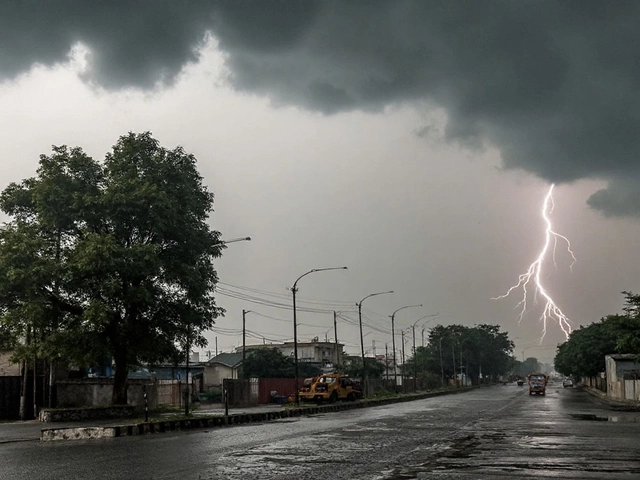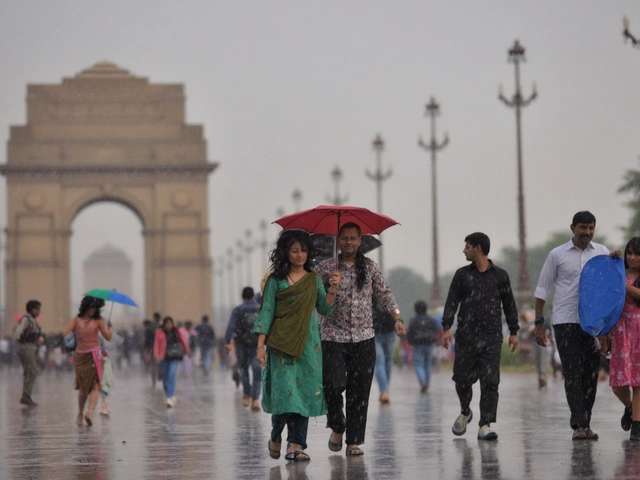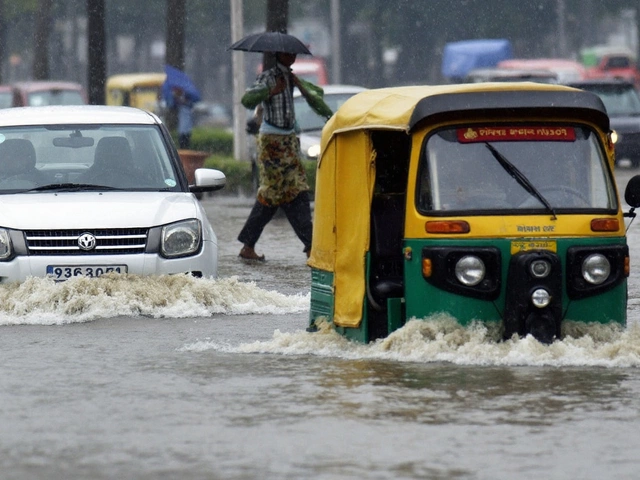Depression over Bay of Bengal revives heavy showers and a familiar Kolkata grind
A fresh burst of monsoon rain — powered by a depression over the Bay of Bengal — left parts of Kolkata slogging through ankle-deep water and long, crawling commutes. Early morning showers slowed the city to a shuffle, with vehicles inching through key corridors and pedestrians navigating pooled water at intersections and underpasses.
The India Meteorological Department (IMD) signaled that the current system would keep moisture streaming into south Bengal for a few days, setting up on-and-off downpours, thunderstorms, and brief gusty spells. While not every neighborhood saw the same intensity, the pattern was classic late-season monsoon: sharp bursts, short breaks, and yet another burst before drains could fully catch up.
Low-lying pockets across north and south Kolkata reported waterlogging after back-to-back showers. Traffic police issued advisories on slow-moving stretches and warned against driving through deep patches under flyovers and near canals. Buses were diverted where needed, and commuters reported longer ride-hailing waits and surge pricing as downpours converged with office hours.
Public transport coped but moved slower than usual. Metro stations saw heavier footfall when rain peaked, while surface transport thinned during the heaviest spells and recovered gradually as showers eased. Rail commuters braced for minor delays on sections where water collected along access roads and near level crossings.
Behind the scenes, civic teams ran pumps and cleared gully pits to move water off main roads. The challenge wasn’t just volume — timing mattered. High tide on the Hooghly can push backflow into outfalls, and when a heavy burst hits during a tide window, drains respond slower. Once the tide turns and the rain eases, many stretches clear within hours, but repeated bursts can reset the clock.
Shopkeepers on ground floors stacked goods on crates, and residents kept sandbags handy at entryways that flood easily. For many small businesses, a few hours of standing water means lost customers and late deliveries. Delivery riders and app-based drivers — the city’s frontline in bad weather — reported detours, dead phone batteries from constant navigation, and slippery road conditions.
The city’s drainage network, a mix of colonial-era brick sewers and newer lines, was under pressure once again. Seasonal desilting and additional pumps help, but high-intensity rain in short windows routinely overwhelms older stretches. Civic engineers say micro-catchment fixes — more frequent gully-pit cleaning, better silt traps, and sealing manholes to prevent backflow — reduce spot flooding but cannot eliminate it during a strong system like this.
IMD guidance pointed to more rain bands sweeping across the city through the week, with the heaviest spells likely during afternoons and late evenings. Many districts in south Bengal were placed under heightened watch for heavy rain at one or two places. Daytime temperatures hovered in the lower 30s with humidity staying stubbornly high, making even brief outdoor errands feel exhausting. Lightning and short gusts were also flagged during thunderstorms.
Authorities urged basic caution: avoid wading through flooded stretches where open manholes or loose cables may be hidden, keep vehicles out of underpasses during peak rain, and park away from large trees when gusty winds are forecast. Residents were advised to charge devices, keep torches handy, and check verified traffic updates before heading out, especially during school pickup and office rush hours.
For commuters, the rhythm of the next few days looks predictable: the morning rush will hinge on overnight rain, while the evening return depends on how the afternoon bands line up with tide. If the system weakens or shifts, drains catch up quickly. If it lingers, late clears and fresh showers can stretch the slog well into the night.
Seasoned Kolkatans know the drill, but the strain is real. Each strong monsoon pulse exposes the same bottlenecks — narrow outfalls, silted drains, and low-lying lanes. The civic body has signaled more capacity upgrades and quicker dewatering in choke points, yet the current spell is a reminder that a sustained, citywide fix will require both bigger pipes and better street-level management.

What to watch through early September
- Forecast: Intermittent moderate rain with a few heavy spells, thunderstorms, and gusty winds around showers. Keep an eye on IMD nowcasts for short-term bursts.
- Commuting: Expect slower traffic on rain-hit corridors and possible diversions near underpasses and canal bridges. The evening peak will be most sensitive to shower timing.
- Drainage: Faster clearing when showers pause outside tide windows; slower during high tide along the Hooghly and feeder canals.
- Safety: Avoid flooded shortcuts, especially around construction zones and open drains; report missing manhole covers to civic helplines.
As the city waits for the depression to weaken, the focus is on staying mobile, staying dry, and staying patient. The monsoon isn’t finished with Kolkata yet, and neither is the city with the monsoon. For now, keep plans flexible, build in extra time, and track Kolkata rain updates before stepping out.








